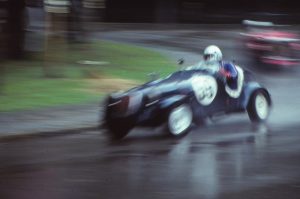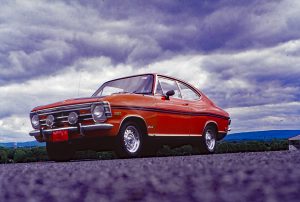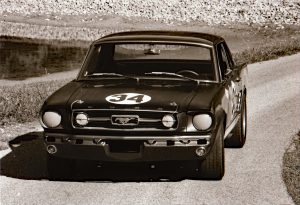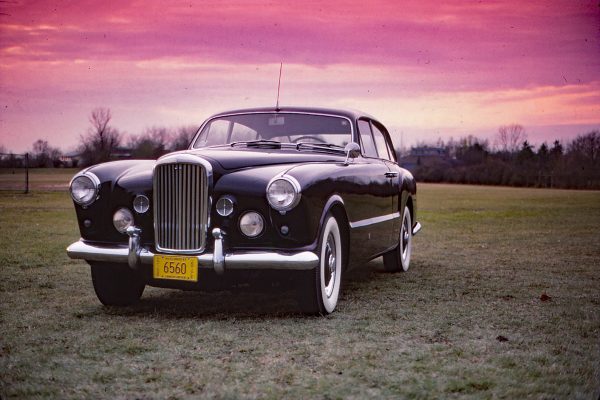History originally published in AutoWeek April 16, 1984
Saying “Gordini” in France is like saying “Shelby” in America. Not only do both names mean automotive performance, but if you don’t stretch the analogy too far, there are similarities between the careers of the men behind the names, Amedee Gordini and Carroll Shelby. Each had begun his career as a race driver, each had taken to building cars on his own and then operated in the same semi-independent relationship with a major car maker, building performance-modified versions of production models.
Shelby, of course, was a Texan transplanted to California. Gordini, on the other hand, was an Italian in France. It was in the ‘30s in a Fiat Balilla with a head and block of his own design that Gordini got his start, and in the early ‘50s sports and formula cars bearing the Gordini marque carried the French blue into international competition. But it was tuned versions of Renaults, especially the Renault 8, for which Gordini is most remembered.
The Renault 8 was Regie’s response to the Dauphine debacle, and though it was in fact Renault Dauphine based, it was a much improved car: Bigger, faster, and the first production Renault to be equipped with four-wheel disc brakes. And it looked different, very different, from the Dauphine, something you can be sure was no accident. While the Dauphine was a French-fried Beetle, the 8 was squared off, an almost perfect three-box car except for the concave hood that looks like someone took a four-by-four to it, edge on.
Did we say faster? You betcha. But the R8, though quicker than most of its subcompact classmates, would burn few barns with its 19.5-second quarter mile. Although it was selling quite well as transportation for the family man of the European Common Market, it was doing little to uphold any of Renault’s sporting image which remained after the market—read Mini-Cooper S—left the Dauphine Gordini it its dust.
So again it was Amedee Gordini to the rescue, transforming the Renault 8 family sedan into a first-class Mini-chaser. Gordini designed a completely new aluminum head for the 1108cc engine, replacing the inline valves in the bathtub combustion chambers with a hemispherical design with valves and push rods staggered like the old Chrysler Hemi. The valves themselves were so big that the spark plugs had to be recessed into minichambers connected to the main combustion chambers by two tiny passages. The head, naturally, was crossflow with individual intake runners mated to a pair of Solex 40 PHH carburetors, with four-into-two headers on the exhaust side.
The standard wet-sleeve block was retained, but the rods, pistons and valve train were modified for higher rpm and horsepower. Behind the rear-mounted radiator was an oil cooler, and the large tubular air cleaner drew from a cool air plenum under the louvers in the rear decklid.
The engine looks impressive as its specifications sound, what with the big carbs and black crackle-painted valve covers. But the proof, as they say, is in the parfait.
And Gordini, Le Sourcier, cooked up 95 bhp at 6500 rpm, a rev range reportedly safe to 8000 rpm, and peak torque up at 4000 rpm. The compression ratio was 10.5 to one, requiring the best premium fuel around. But what the heck? At 30-plus cents per gallon and 20-plus miles per gallon, who cares.
Nor did Gordini ignore the chassis. The suspension was lowered 1.5 inches all around, with higher spring rates and a decambering of the rear swing arm suspension. A larger front anti-roll bar was fitted along with stiffened shock absorbers—four at the rear, in fact, to tame the wild swing arm.
Otherwise the Renault 8 Gordini is underwhelmingly unchanged: Different instrumentation, a pair of narrow white stripes over the French racing blue paint (no option on the color), and an art nouveau “GORDINI” badge are the only external indications that it is anything but a standard truffle hauler.
Indeed, it doesn’t look that menacing with its four doors and bolt-on hubcaps over the three-lug 15-inch wheels. The interior is typical French economy class, with lots of painted metal and mushroom-shaped front bucket seats that feel a lot better than they look (speaking of truffles…). Anyway, the overall effect is more innocuous than threatening.
Actually, “presumptuous” would be a better description, as we learned from driving a Renault 8 Gordini from Automarque in Arlington, Virginia. The little blue box with the white stripes and raucous exhaust doesn’t get much respect while stopped at a traffic light. In fact, condescending smirks and derisive giggles were more the order of the day, made worse by blipping the throttle, which Automarque’s Alan Modny suggested might be necessary to keep the plugs from fouling during prolonged idling.
But it’s all worthwhile when the light turns green. Rev the little engine up and dump the clutch. No muss, no fuss, no chirping of the tires. It just squats a bit—more of a curtsy, really—and scoots. It’s quick. Rare will be the car that can beat it across the intersection. Of course, over the longer haul, bigger motors overtake it. There’s only so much one can expect from 1108cc, after all.
Still, it turns in a creditable performance. Quarter miles are ticked off in the low 18s at almost 80 mph, and zero-to-sixty is done in just over 11 seconds flat. Top speed is almost 100 mph if you have the time and place.
And oh, l’esprit, la joie de vivre. The Gordini just seem to enjoy full throttle. Part throttle makes the car impatient with the driver, so the natural tendency is to give the car its head: It’s Jacques le mini bruin, a Jacobin at heart. It buzzes like a tin can with a hornet inside, a hornet with a serious overdose of steroids. It is simply impossible to drive this car like a Naderite.
And handling. Handling will come as no surprise to anyone who has ever owned a rear-engined automobile. Modny did have us spooked for a while, however, with dire warnings of cornering contretemps, but while slowly edging up to cornering speeds, all the while expecting the worst, we found there was little to dread. The Gordini has the straight-line stability of a well-fired spitwad and caroms through corners like a spitwad off the back of a crew cut head. It is the ultimate boy racer. If this one doesn’t make you feel like a kid again, it’s time to sign in at the Home for the Hopelessly Middle-Aged.
It is simply a delight to drive. Not that it doesn’t have its drawbacks, such as the pedals offset to the right to clear the front wheel well that invades the passenger compartment, or the shifter, quick and accurate despite the spongy feel, too close to the driver’s right knee in first and second. But that’s character. That’s what gives the car individuality. The only real complaint is a shortage of instrumentation. The gauges there are nice: “0-80 tr/min x 100” tachometer, optimistic 125-mph speedometer with trip odometer, temperature and essence (gas) all by Jaeger. But a 1.5-horsepower-per-cubic-inch engine deserves more monitoring than that.
Delight on the road or not, it was obvious that giving away displacement to the 1.3-liter Mini-cooper was not the fast track to the victory circle. So Amedee Gordini cooked up another solution: The Renault 8 Gordini 1300. The size increase was accompanied by fitting liners of greater bore than that of the 1100 and brought actual displacement up to 1255, closer to the 1.3-liter class limit. Power went to 103 horses with more tractability, but rally-tuned versions were cranking out between 120 and 130 horsepower. Other changes included a five-speed transmission, an auxiliary fuel tank in the front luggage compartment, and an additional pair of headlamps.
The 1100 was produced from 1964 until superseded by in mid-1966 by the 1300, which Gordini built until 1970. In all some 12,500 were made. On July 19, 1970, 10,000 Renault Gordini owners (Dauphine included) gathered at the Castelet circuit in Franc to mark the end of the marque’s manufacture. It was the end of the “true” Gordinis. Subsequent Renaults bearing the Gordini badge would be products of the factory at Brillancourt, not Gordini shops. Shades of Ford Motor Company and “Cobra.”
The Renault 8 Gordini never was seriously imported into the U.S., and Renault, with spotty dealer network Stateside and booming sales in Europe, seemed content to let the America market simmer on the back burner. As a result, a Gordini-ized Renault 8 has always been a rare on this side of the Atlantic.
And Daddy’s SUV full of teenage boys laughed at Amedee Gordini’s little blue racer and the white stripes in a way that they never would have one of Shelby’s products. At least until the light turned green…





















What Do You Think?
You must be logged in to post a comment.